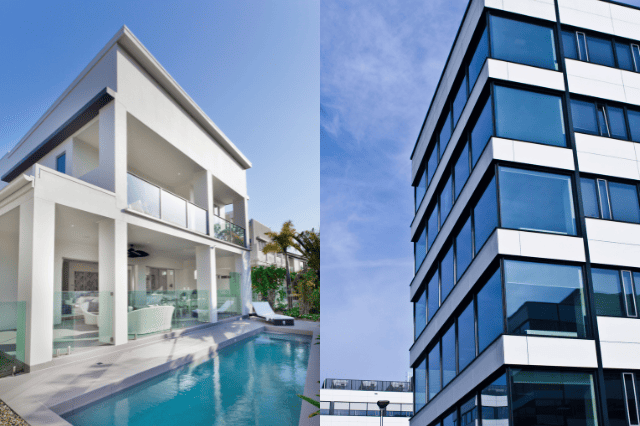Establishing a Self-Managed Super Fund (SMSF) to invest in property can be a sound strategy for building long-term wealth, but it requires careful thought and planning. Like any prudent investment, success hinges on selecting assets with sustainable growth potential, predictable cash flow, and minimal risk. Assessing factors such as location, property type, and economic trends is essential to ensure your investment aligns with your retirement goals and offers reliable returns over time.
The journey doesn’t end with property selection—setting up an SMSF involves navigating regulatory requirements, loan structures, and compliance obligations. Trustees must understand the complexities of ownership, financing, and tax implications, making it crucial to follow a well-structured process. Good guidance can turn complexity into opportunity. A licensed financial adviser ensures your SMSF decisions align with your goals while keeping you on the right side of regulations. Taking the time to establish your SMSF correctly not only mitigates risks but also positions you for long-term success by maximising the fund’s performance and protecting your retirement savings.
1. Location
The location of a property is one of the most critical factors influencing its long-term success as an investment. Properties situated in high-demand areas often have lower vacancy rates and higher rental yields, making them more attractive investments. The area’s population growth, employment opportunities, and infrastructure development are considered when evaluating a location. This means that areas experiencing population growth are likely to see increased demand for housing, which can drive up rental income and property values.
Additionally, proximity to schools, public transport, shopping centers, and medical facilities is important. Places near these amenities are generally more desirable to tenants, and this ensures a steady rental income for SMSF trustees. Similarly, properties in areas undergoing infrastructure development, such as new roads, public transport links, or commercial centers, often experience significant capital growth as the area becomes more accessible and attractive to both residents and businesses.
Finally, the economic stability of the area where it is located is worth considering. Areas with a strong, stable economy are generally more attractive for investment, as they are likely to have higher employment rates, strong demand for housing, and stable property values. In contrast, areas with economic instability may be more volatile, with greater risks of vacancy and declining property values.
2. Property Type
The type of property you choose impacts the nature of your investment. The two main categories are residential and commercial, and each comes with its own set of advantages and challenges.
| Aspect | Residential Properties | Commercial Properties |
| Growth Potential | More stable, long-term growth | Potential for higher capital growth but more volatile |
| Rental Income | Relatively predictable and stable | Higher rental yields but with more variability |
| Ease of Leasing | Easier to lease due to higher demand from tenants | May experience longer vacancy periods if a tenant leaves |
| Risk Level | Lower risk with stable demand | Higher risk, sensitive to economic conditions |
| Management Complexity | Generally easier to manage and maintain in an SMSF setup | Requires deeper market understanding and more complex management |
| Lease Agreements | Simpler lease agreements, typically shorter-term | More complex lease agreements, often longer-term but detailed |
| Market Sensitivity | Less sensitive to economic fluctuations | Highly sensitive to economic changes |
Based on these differences, residential properties are often a popular choice, mainly because they are stable and easy to manage.
3. Rental Yield
Rental yield is an indicator of a property investment’s income potential. It is usually expressed as a percentage and represents the annual rental income as a proportion of the purchase price. There are two types of rental yields to consider: gross rental yield and net rental yield.
Gross rental yield is calculated by dividing the annual rental income by the property’s purchase price. This figure provides a basic estimate of the income it could generate. However, gross rental yield does not consider any other cost of setting up SMSF or the expenses of owning the property, such as maintenance costs, management fees, and insurance.
On the other hand, net rental yield provides a more accurate estimation by factoring in these expenses. It represents the actual income you can expect after all costs have been deducted.
4. Property Condition
The property’s condition is another crucial factor affecting the rental income and overall return on investment. If it is in poor condition, it would need significant investment in repairs and maintenance, reducing the net rental yield and impacting its capital growth.
Hence, conducting a detailed building and pest inspection before purchasing any property is a good idea. This inspection can reveal structural issues, pest infestations, or other problems requiring costly repairs. In addition, any long-term maintenance requirements should be considered. Older properties may have higher maintenance costs due to wear and tear. In comparison, newer properties might have lower maintenance needs but could require updates or renovations to remain competitive in the rental market.
5. Property Layout and Size
The size and layout of the property should be suitable for the needs of your target tenants. For residential properties, you must consider the number of bedrooms and bathrooms, the size of living areas, and the availability of outdoor space. Properties that offer flexibility in layout and use are generally more attractive to a broader range of tenants.
Similarly, the layout of commercial properties should be adaptable to different types of businesses. A flexible floor plan that accommodates various business needs will make it more appealing to potential tenants, reducing the risk of extended vacancy periods.
6. Potential for Capital Growth
The potential for capital growth is a key consideration for any property investment through SMSF loans or traditional loans. Capital growth refers to the increase in the property’s value over time, which can significantly enhance the overall return on investment.
When evaluating the potential for capital growth, researching market trends is a good place to begin. Look for areas experiencing economic development, population growth, and infrastructure improvements as they drive up values. For example, areas with new transport links, shopping centers, or schools will likely see increased demand for housing, leading to higher values.
Additionally, you can consider the historical performance of properties in the area. While past performance does not guarantee future returns, it can provide some insights into the potential for capital growth.
Choosing the right property for your Self-Managed Super Fund (SMSF) is a crucial decision that requires a deep understanding of the rules and regulations surrounding these types of investments. One aspect to consider is the specific loan structures available for SMSFs. For more insights into how to finance your property purchase, it’s important to familiarise yourself with the details of understanding SMSF loans, as this can significantly impact your investment strategy. Ausfirst Lending Group simplifies SMSF financing with tailored solutions, helping trustees make smart choices that secure long-term success. By ensuring you have the right loan and property combination, you can optimise the long-term success of your SMSF investment.
For trustees aiming to expand their portfolios, investment property loans present a valuable opportunity to diversify into real estate while balancing risk and reward. Similarly, integrating trust structure loans into your SMSF strategy offers not only financial flexibility but also an added layer of protection, ensuring your fund stays resilient through market fluctuations.
7. Regulatory and Compliance Considerations
Compliance with SMSF laws and regulations is critical when choosing a property. SMSFs are associated with strict rules, and one of the key compliance considerations is zoning and regulations. The property must be zoned appropriately for its intended use. For example, if you are purchasing a commercial property, it must be zoned for commercial use. Another important consideration is ensuring the purchase aligns with SMSF laws i.e., it must meet the “sole purpose test,” which requires it to be used solely to provide retirement benefits to the fund’s members.
8. Price and Affordability
This goes without saying – affordability is a consideration when choosing a property for your SMSF. The purchase price should align with your SMSF’s budget and investment strategy. Overpaying can significantly impact your returns and limit your SMSF’s ability to invest in other assets or meet its financial obligations.
You can start by assessing the property’s market value. To determine the fair market value, look into previous sales of nearby houses that are comparable to yours. This can increase your chances of receiving a good return on your investment and prevent overpaying.
The next thing to do is assess how affordable your SMSF is. Ensure your SMSF has enough money to pay for the acquisition price plus any other charges like stamp duty, legal fees, and continuing costs like upkeep and management. If your SMSF’s budget is stretched too thin, it could affect the fund’s ability to meet other obligations, such as paying pensions to members.
9. Exit Strategy
An exit strategy is an aspect of property investment often overlooked. An effective exit strategy ensures you can sell it if needed and that the sale aligns with your SMSF’s overall investment goals.
When developing an exit strategy, consider liquidity. Properties in high-demand areas are generally easier to sell and may attract higher prices. In contrast, properties in less desirable locations or with niche market appeal may take longer to sell and may require price reductions to attract buyers.
Conclusion
Choosing the right property for your SMSF requires considering various factors, from location and type to rental yield to layout. While it can be overwhelming, the key is thoroughly researching and evaluating each factor. This ultimately helps you make an informed decision and maximize the returns on your investment!



